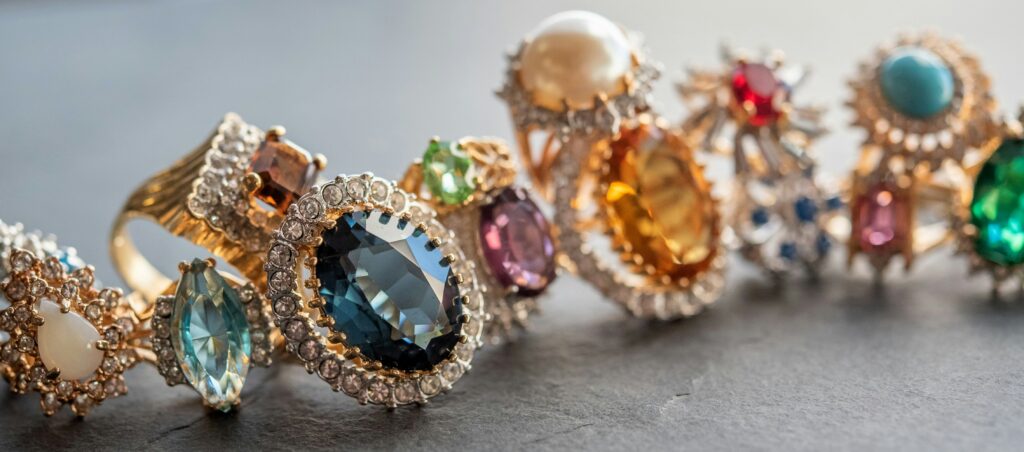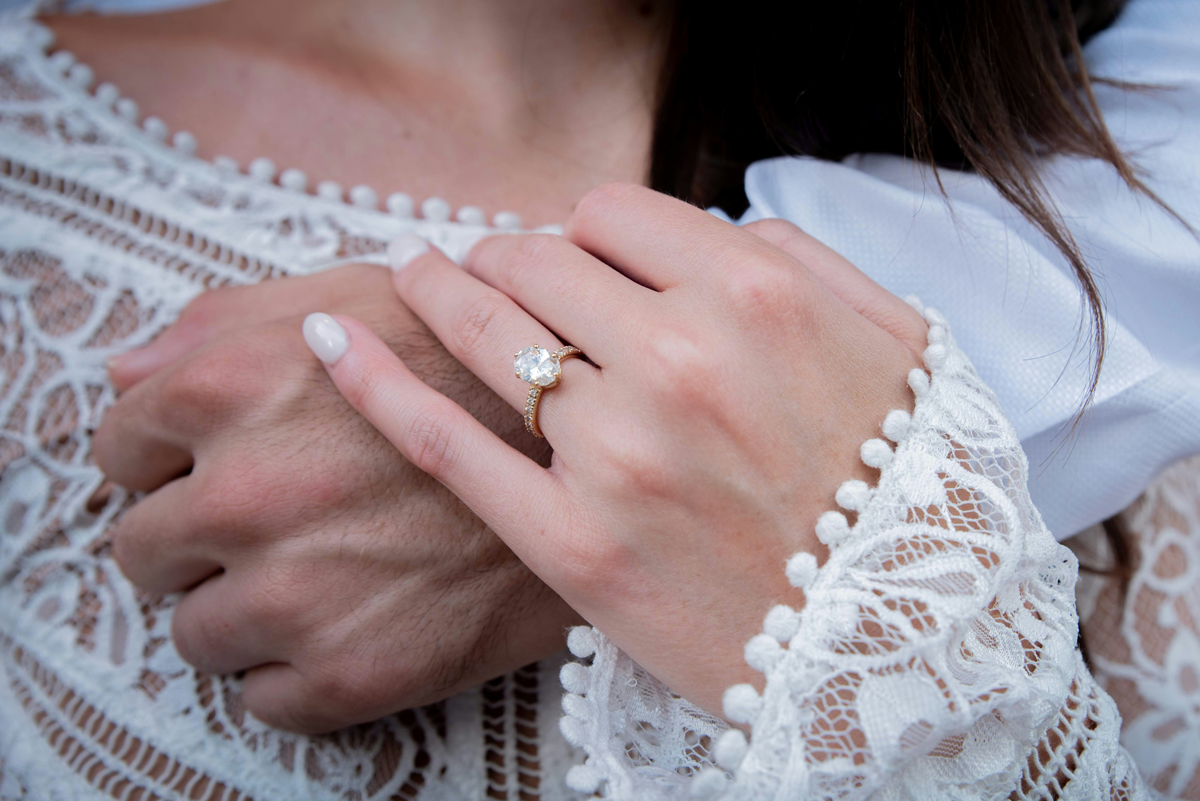Is it time to ditch the diamond?
“Diamonds are forever.” An idea so widely held that many believe it is a time-honored tradition. The truth is that while engagement rings have been around for centuries, diamond engagement rings are a relatively recent development.
Engagement rings had been in use since well before the 12th century when Pope Innocent III mandated them. These rings were often modest, especially among the lower classes. Up until the late 1800s, it was common for American women to receive thimbles for their engagement. They would cut the tip of the thimble off after their weddings and wear them as rings. Diamonds did not become the standard until a clever marketing tactic took the jewelry industry by storm.
A girl’s best friend
Diamonds used to be a rare gem up until the 1870s. That is when Miners discovered large veins of them in South Africa. Very quickly, the precious stone became very common. Technically, this should have driven the price down, but mine owners couldn’t let that happen. Many major African mines merged to create De Beers Consolidated Mines, Ltd. This allowed them to control the flow of diamonds to the world market, creating a false sense of scarcity and keeping the prices high.
In the late 1930s diamond sales began to decline, forcing De Beers into action. With the help of N.W. Ayer, the company launched a marketing plan that put diamonds on the hands, wrists, and necks of Hollywood’s leading stars. Fashion designers were encouraged to predict diamond rings entering the fashion scene as a rising trend. Thanks to these efforts, American diamond sales increased by over 50%.
The diamond industry shot through the roof, but this wasn’t enough for De Beers. In 1947, N.W. Ayer coined the slogan “A Diamond is Forever”. Playing off the high durability the stone is known for, the slogan was used to advertise diamond engagement rings. A diamond’s strength became a symbol of the strength of one’s love for their partner and (hopefully) the endurance of their soon-to-be marriage. While this campaign had a lot of success, there has been a decrease in the popularity of diamond engagement rings in recent years.
The true price of diamonds
The process of mining for all kinds of gems, minerals, and metals has long since caused irreparable damage to the land being mined and the people living there. Many laborers, including children, have been killed and injured in mining accidents and poor working conditions. Indigenous people have been displaced and abused by armed groups who exploit and pollute the land in the process.
It is the responsibility of jewelry companies to not contribute to the human rights abuses of these industries. There is an international standard set by the Organization for Economic Co-operation and Development, but many companies fall short of this. The Human Rights Watch looked into thirteen of the world’s most prominent jewelry brands, and their findings were less than ideal.
…some companies are actively working to identify and address human rights risks in their supply chains, others rely simply on the assurances of their suppliers that their gold and diamonds are free of human rights abuses, without rigorously verifying these claims. Some have made no commitments to responsible sourcing at all. Almost none can identify the specific mines where all of their gold and diamonds originate. Few provide comprehensive public reports on their efforts to responsibly source gold and diamonds.
Juliane Kippenberg and Jo Becker
With knowledge of these human rights violations being more easily accessible, more and more people have been turned off from diamonds. People would rather put the extra effort into searching for sustainably mined and crafted jewelry that doesn’t contribute to the suffering of whole communities of people. This has led a lot of young couples in the direction of alternative stones for their engagement and wedding rings.
The curse of millennial grey
The late 2010s brought on the neutral trend. From clothing to interior design, to fast food restaurant renovations brown, black, white, and shades of grey were all the rage. The pandemic caused a huge spike in the trend. With the world being so crazy everyone wanted a soothing, cozy environment to escape into, but this didn’t last long. People soon got tired of their bland homes and began yearning for color. Looking around at the dull world of HGTV’s grey home renovations and TikTok’s sad, beige babies, color became a huge priority.
What does this have to do with engagement rings? The alternative stones many people are using are richly pigmented. From bright sapphires to deep emeralds and iridescent opals, these stones make a much stronger statement that many couples are looking for. For an everyday piece of jewelry, a clear stone like a diamond just isn’t doing it anymore. Many people are opting to bring a little bit more color into their lives with alternative stones.
What are the options?
There are many alternative engagement stone options. It is largely up to your personal preference, but one of the most important things to consider is durability. A stone’s rank on the Mohs hardness scale is an important factor when it comes to everyday wear.
Sapphires and rubies

Rubies are essentially red sapphires. They are both corundums and they get their colors from impurities present in the stone like iron, titanium, or chromium. They sit at a 9 on the Mohs scale, making them great options for everyday wear.
Morganite

Morganite is a popular diamond alternative. It has a pink hue and ranks at a 7.5-8 on the Mohs scale.
Amethyst

Amethyst, as well as other types of quartz, are tried and true options. They are a 7 on the Mohs scale which isn’t the most ideal and will need a little extra care. Colored quartz also tends to fade with frequent sun exposure.
Lab-Grown diamond

You could always opt for a lab-grown diamond. These diamonds are more sustainable and ethical. They can also come in a variety of colors from black, yellow, blue, salt and pepper, pink, and more. Diamonds, including those created in a lab, sit at the top of the Mohs scale with a rank of 10. Clear stones like Moissanite also give a very similar look with more sparkle and a slightly lower Mohs rank of nine.
No more blood diamonds
There are far more sustainable and affordable options than the traditional diamond engagement rings that are just as, if not a more beautiful way to kick off this new chapter of your life. Shopping from small businesses that prioritize sourcing their materials ethically, unlike many large diamond jewelers helps steer the industry towards a more sustainable future.
Gone are the days when lab-grown diamonds are looked down on as fake. They are very much real, and if it’s the suffering that makes diamonds valuable, it is time to leave them behind.
Check out:







Excellent article filled with great alternatives.